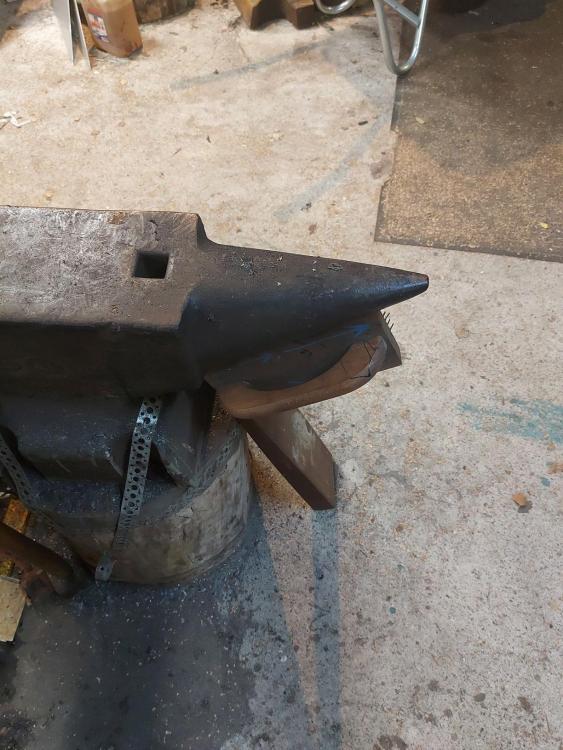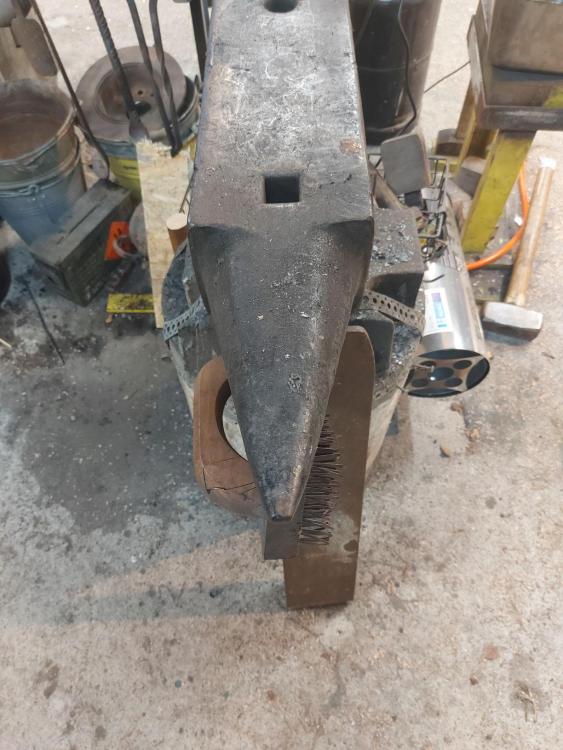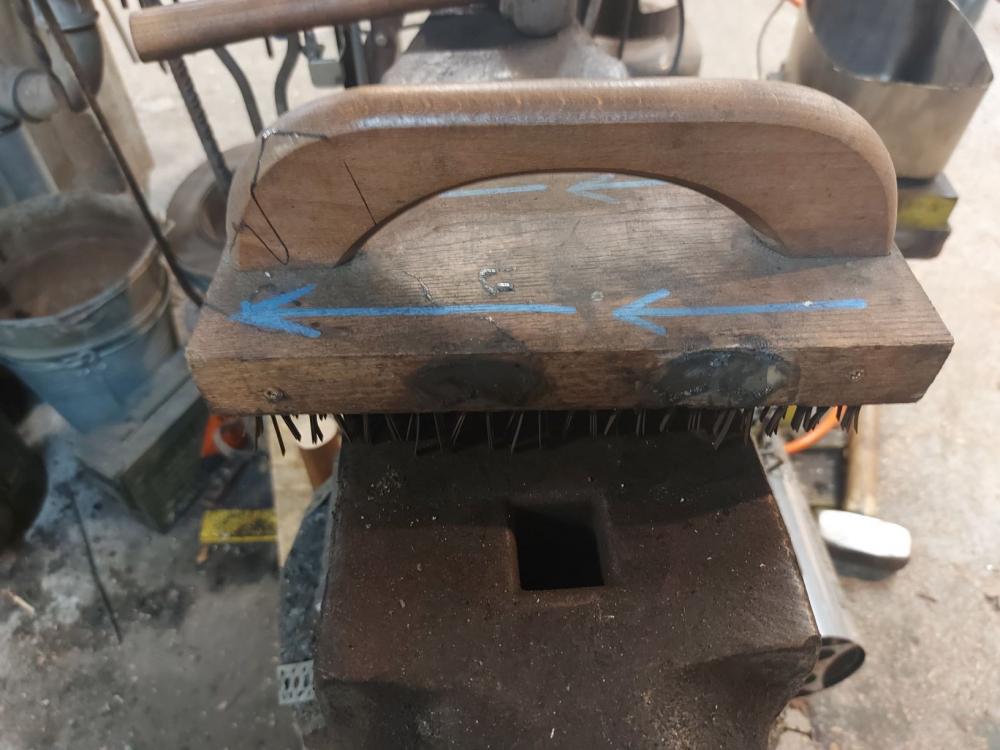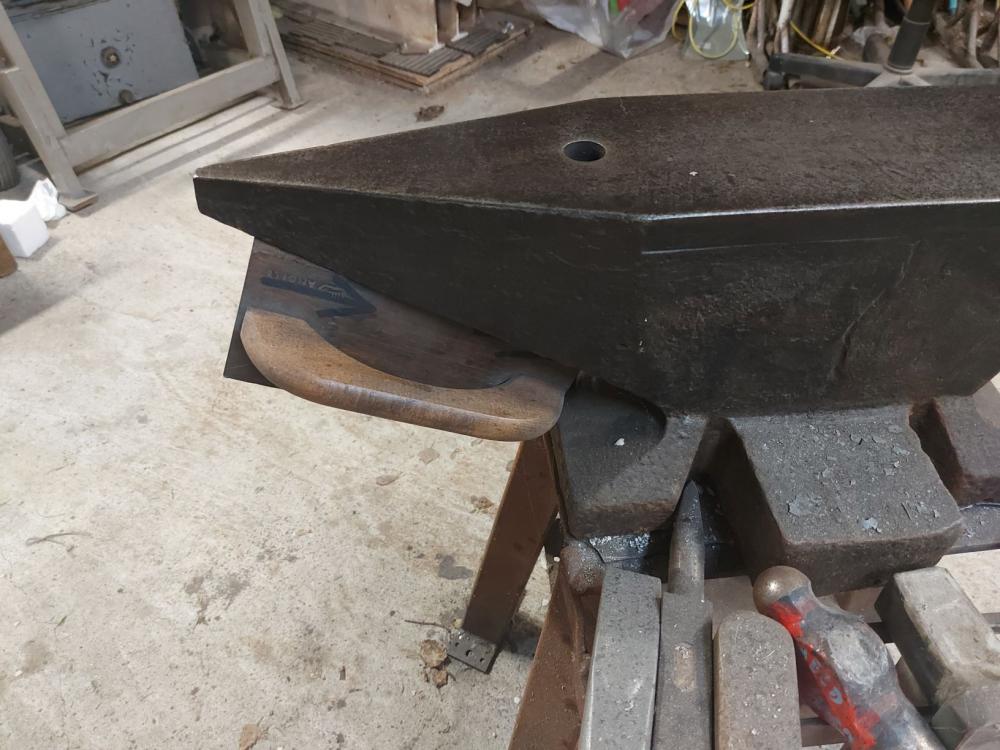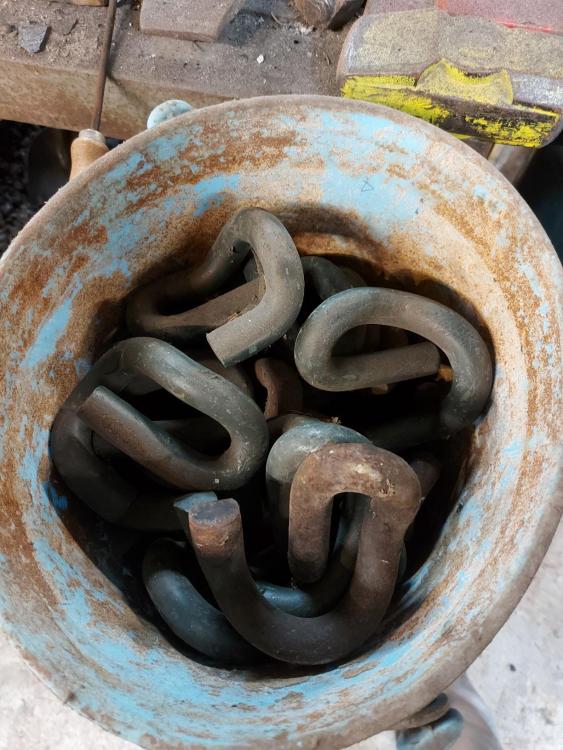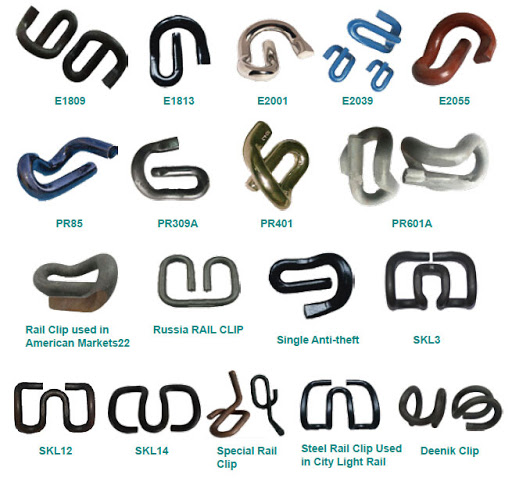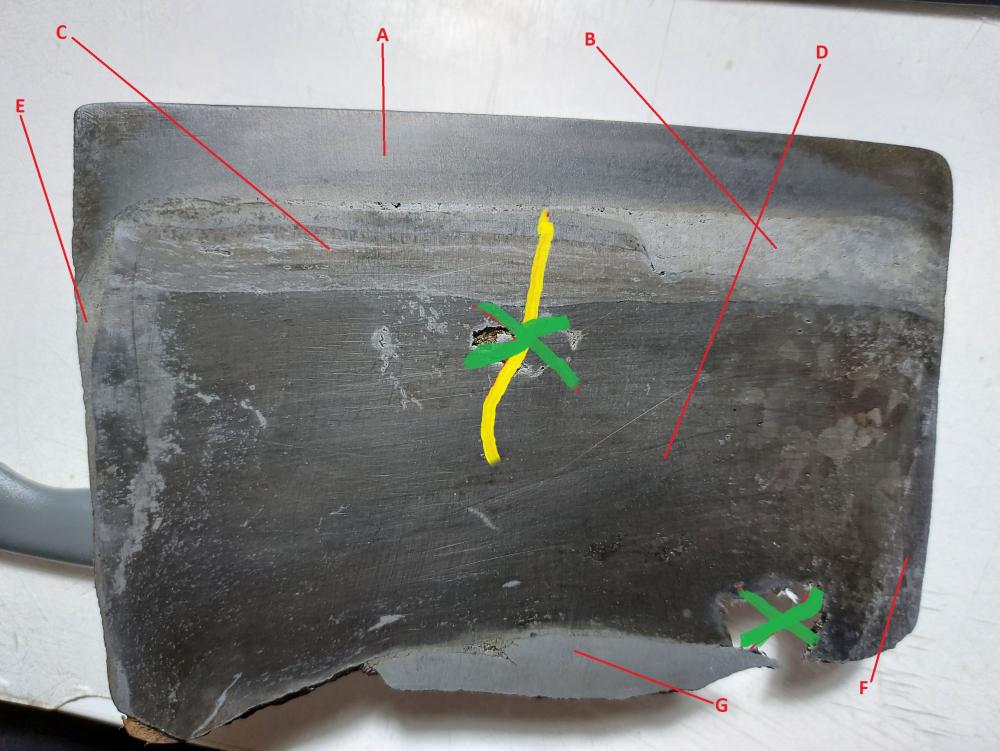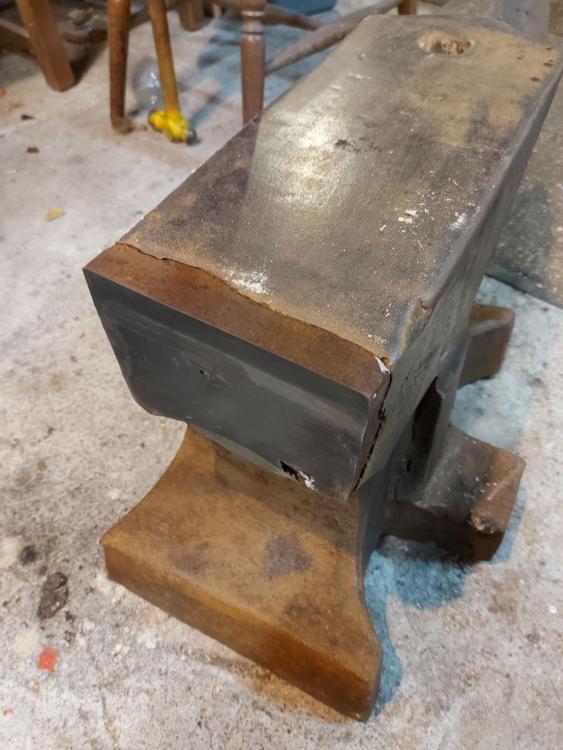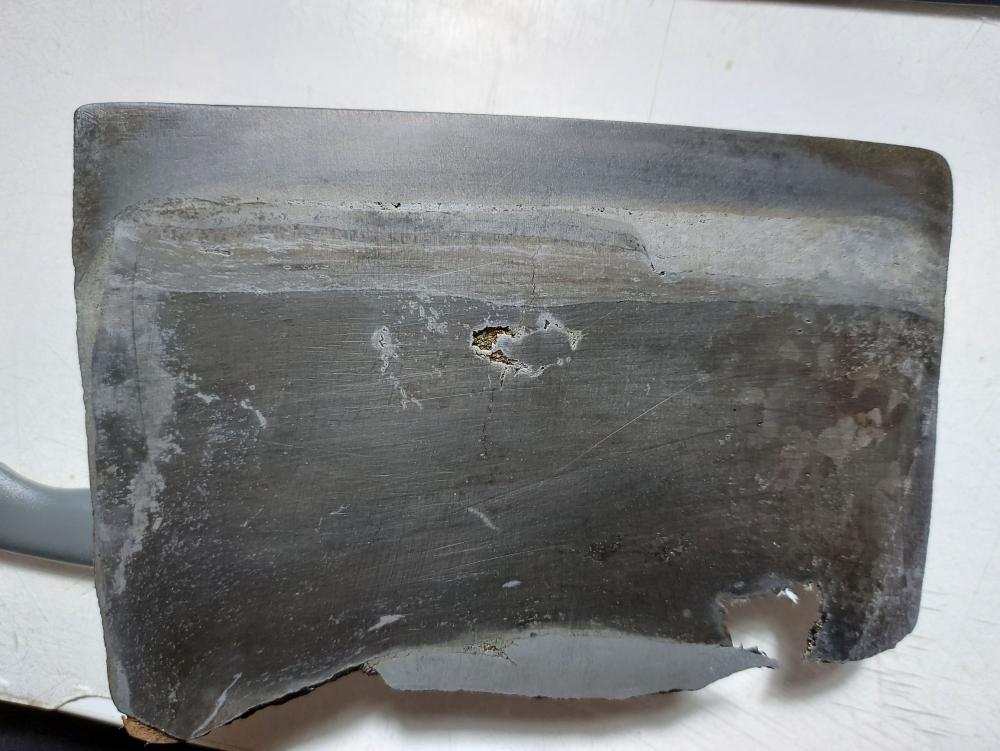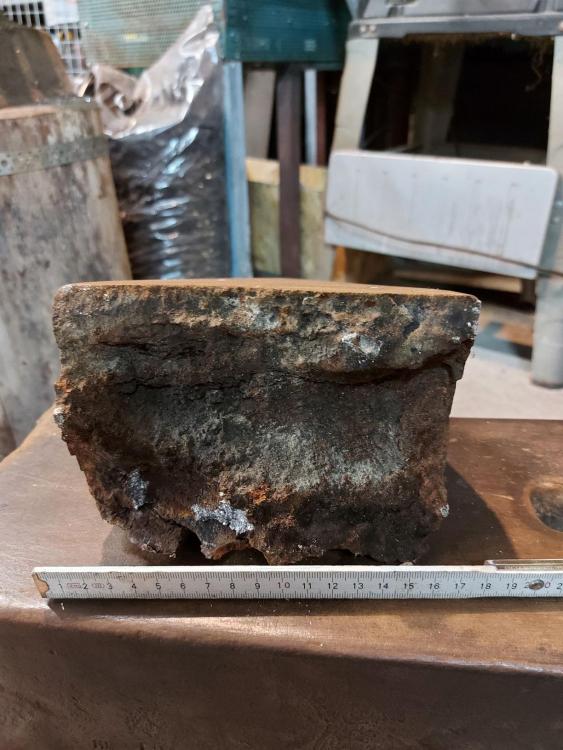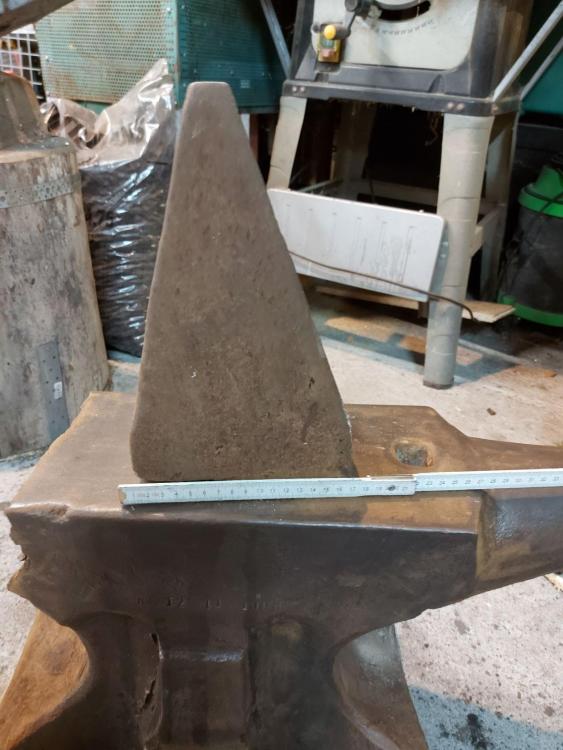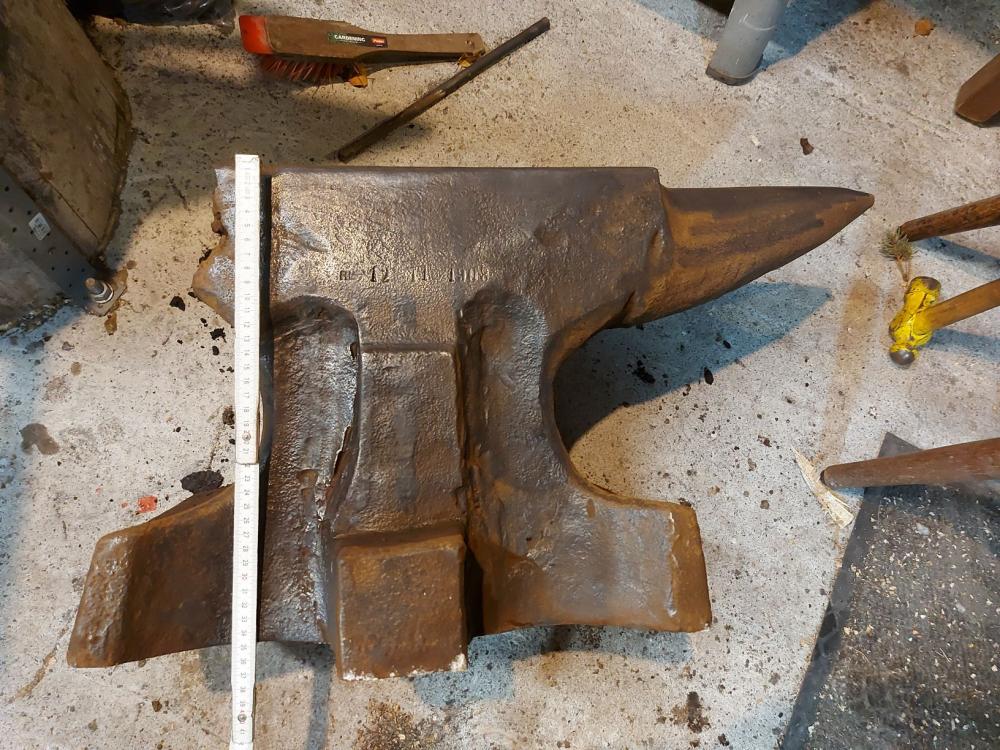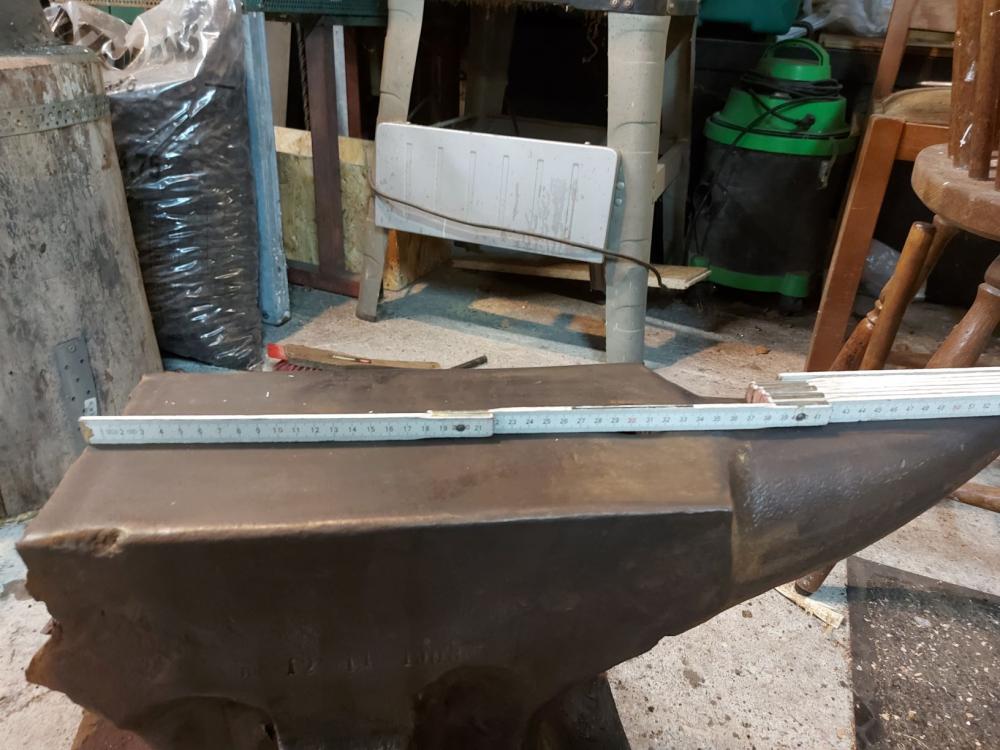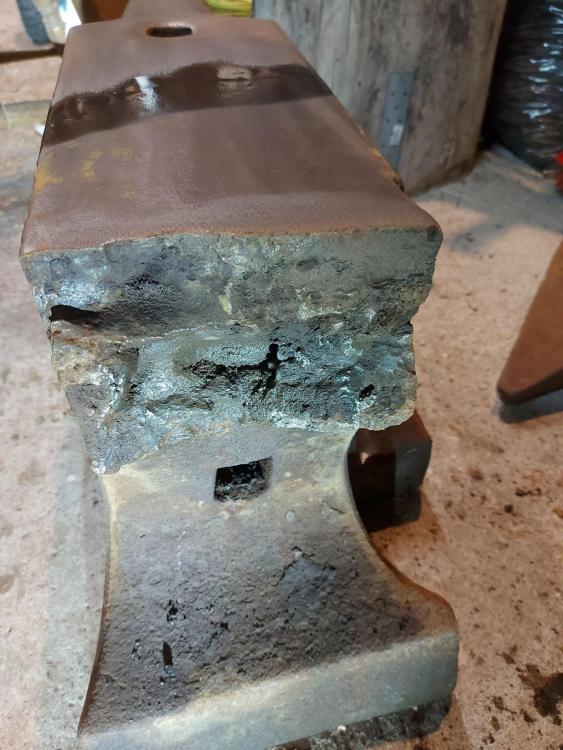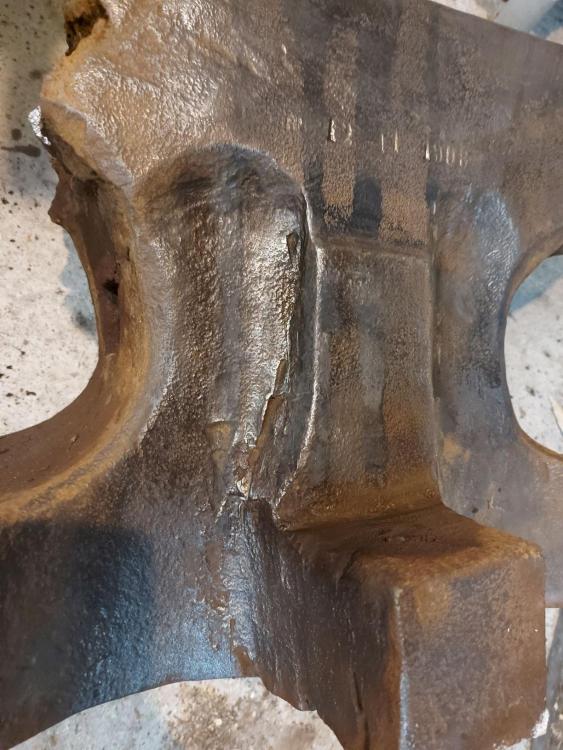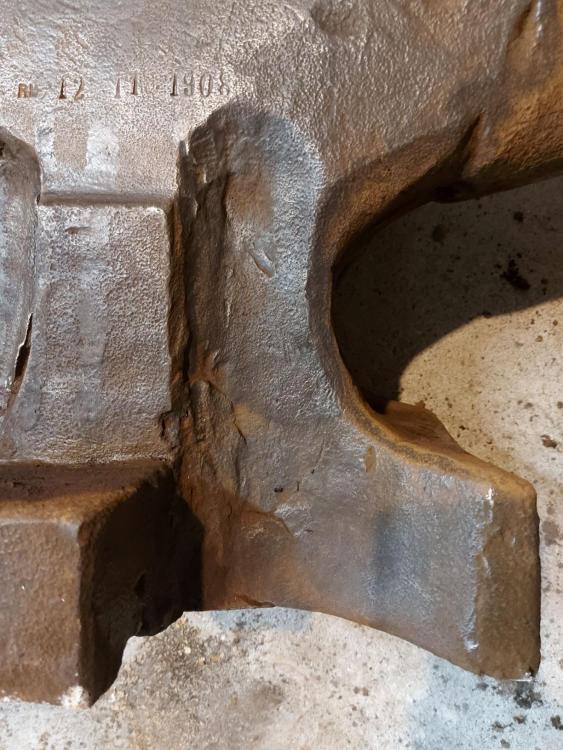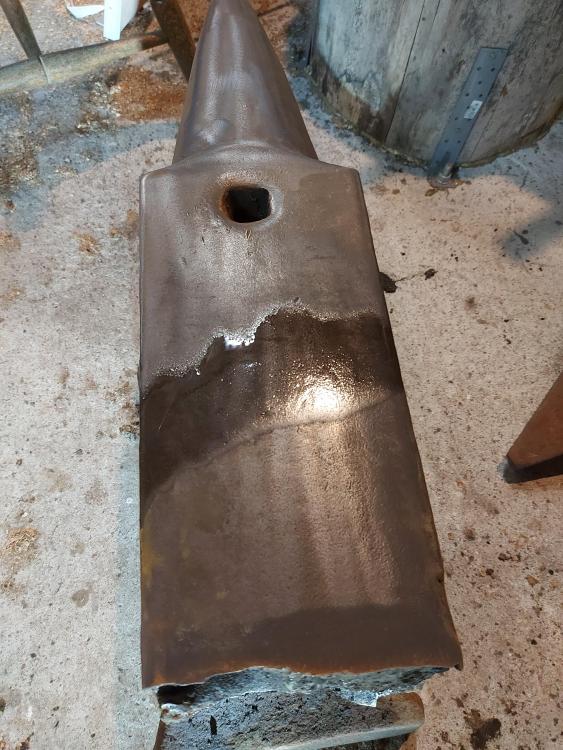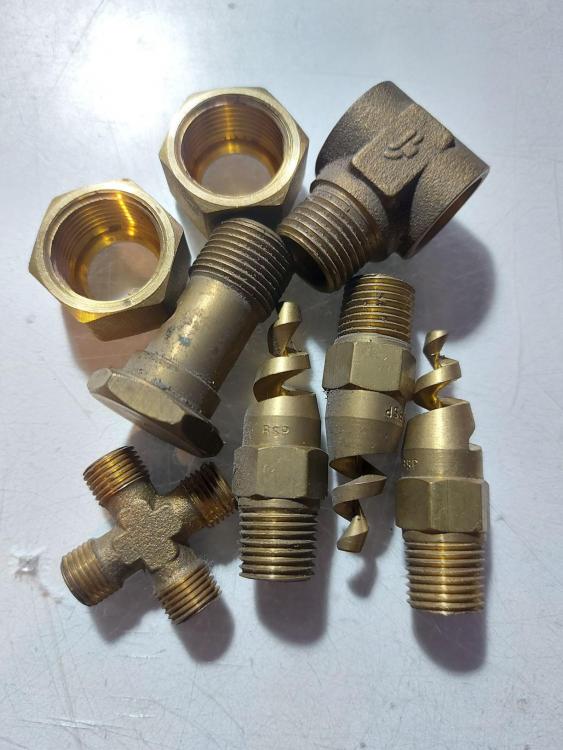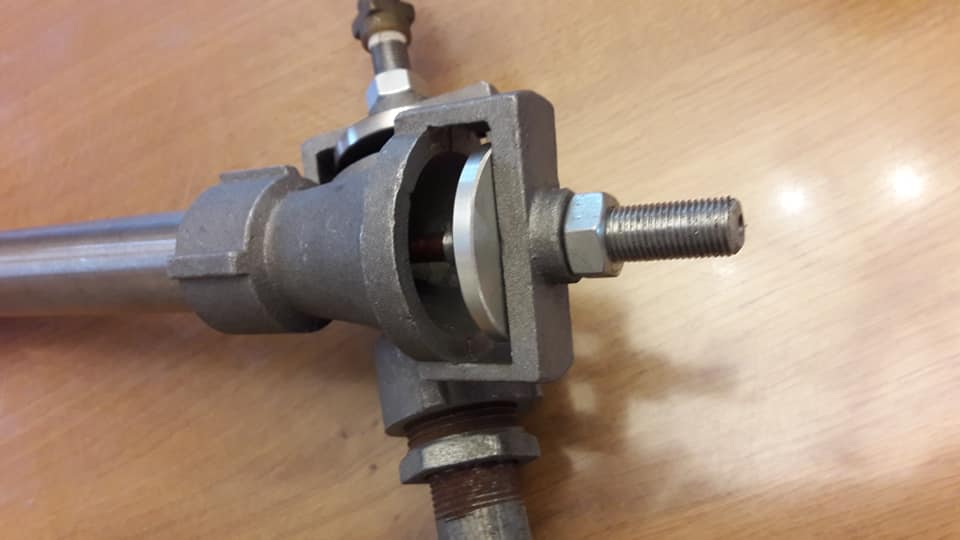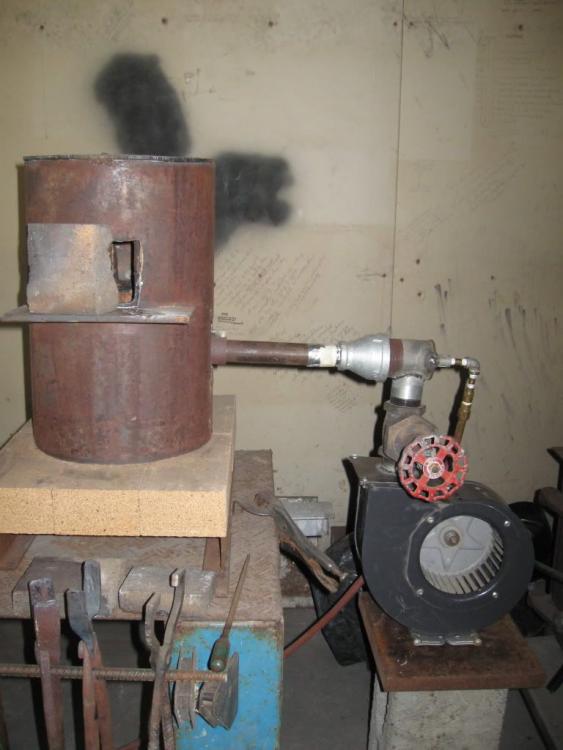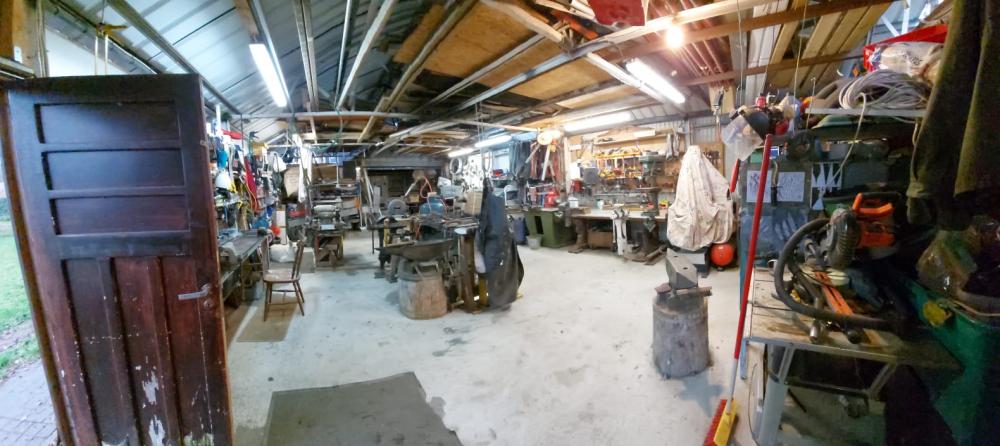
BartW
Members-
Posts
281 -
Joined
-
Last visited
Content Type
Profiles
Forums
Articles
Gallery
Downloads
Events
Everything posted by BartW
-
It can withstand heat very well; just don't quench it in water. you can grind it fairly hot; but leave it to aircool. if you work ik fysically; it does workharden (become brittle) a bit. from my understanding, ductile iron is a special form of cast iron; which get's it's special abilities from the molecular structure with grafite and such. It's much stronger than aluminium; but much cheaper than forging the same part out of steel. It's somewhat mallable, but to a degree. The dust is also not good for your health in prolonged exposure, so use all the needed PPE; as it does make noticeably more dust, less chips than working steel.
-
What wire (Scrub) brush do you recommend?
BartW replied to Apple Duck's topic in Tools, general discussion
I agree, just found a missing brush in the rack of leaf spring steel behind a large leaf. Been looking for that one for the last 6 years -
Brass melting or burning ?
BartW replied to BartW's topic in Smelting, Melting, Foundry, and Casting
Well; it melted , I think I was just rushing and heating it up too quick. (too hot). once I got it molten, I added some more stuff, borax'd it; scooped the crud off; and cast in a pre-heated grafite mold. Worked quit well; and gives me nice barstock to mill guards and stuff. I installed a vapor extractor (usually for welding) just in case I get strange smoke again, but it seemed fairly OK this time. Thanks for the help guys -
Facial Hairstyles and Filtering Facepiece Respirators
BartW replied to ThomasPowers's topic in Safety discussions
I 'm still using the diving mask; essentially to not ruin new glasses with sparks: and the old are still in the mask. I'm fairly stubby as I hate shaving. Been trying to get a hold of one of those resp-o-rators JHCC, but they aren't for sale in europe... probably some idiotic law around PPE. -
What wire (Scrub) brush do you recommend?
BartW replied to Apple Duck's topic in Tools, general discussion
I use a scraper like anvil says, which is essentially a sharpened file-tip. Does require some practice, I've seen apprentices manage to ruin a nice surface finish with it about them brushes; I have only 2; pictures below. I add a couple SCSI hard disk magnets to one side (I mill a small recess and epoxy them in). then they double as my anvil-silencing magnet, critical temperature checker and brush ! I usually store the brushes under the right horn, just like JHCC, as I'm righthanded. I also put a couple coats boiled linseed oil on them (roughly once a year when I got a brush of linseed oil that needs cleaning). I also found they last longer if used in only one direction; hence the arrows. Lastly; I reinforce them with long needle screws to prevent the woord from spilitting. -
Suitability of railroad fastener clip for holdfast
BartW replied to Tom May's topic in Tools, general discussion
just measured, these guys are 20mm round, the other bucket I got is 18mm round. the butterfly clips are 16 mm. These green ones I had analysed, and the composition was really really similar to 9260 steel. -
Hello All; I had a call with Joey (TechnicusJoe), great guy. Hung on the fone for couple hours He was really interesting & interested in the slice and anvil; and he is going to adopt the broken off horn. I'm curious what he's going to do with it.
-
Suitability of railroad fastener clip for holdfast
BartW replied to Tom May's topic in Tools, general discussion
Hello; For this part of the world; pandrol E-clips are available in 2 crossections; 18 and 16 mm round (E2039 and E2055 in the pic below). There are also Butterfly clips, which have 2 sprins sides, but are generally thinner. I got buckets of 'm; good trading stock Now I can't get them new; but when they work on track; they remove these clips and trow them away ! ... They apparantly only install new ones. The one I have are colourcoded; the greens are 16mm, the 18 are red. The steel in them is usually a variant of 9260; which is a great steel for tooling; mediocre for knives. Tough stuff. Doesn't want to move under the hammer. Don't forge it too high, it suffers from grain growth like O-1. Normalising is also a good idea. Testing for cracks is also a great idea after forging. Not that great for tongs. For a holdfast it would be great steel; just make sure to NOT quench the tip in water even if it gets red-hot. -
Hello; Some more details; I tried cutting with my bandsaw (not the top plate, I know that is hard); but even the bottom part dulled the saw before I was in a couple of mm. I assume impurities which are hard ? A: Faceplate. nice fine grain, but why does it curve downwards on the edges ? B: Under the faceplate, grainy look, and looks like a grainy weld too; runs almost to the other side, but tapers really thin. C: Also under the faceplate; but this section looks like pattern welded steel with a coarse grain (you can see layers ...) D: main body in what I assume is wrought iron, it has that streaky look to it. However, I cannot explain the left-to-right difference. the left seems spotty, while the right has really large grain growth (I assume like Thomas said, prolonged forgewelding heat..) E: Side of the anvil cover ? clearly a seperate piece; but honestly, no clue. F: the same as E, but it doesn't run untill under the faceplate; soooo nope, no clue either. G: even less of a clue; this is under the horn. Cluesless as I am; the only thing I can imagine that would explain this patchwork is the horn failed before; and it was foregewelded back together (This anvil has been in the weapons school of Liege (predecessor of FN) for over a century; they have the equipement to do this). Note: Ignore the yellow crack (I probably cut the slice too thin) and Ignore the green spots too; too thin in these places ...
-
Hello Guys; I'm somewhat speechless. I figured I'd cut a straight surface on the broken off horn from my 1908 Liegois weapons school anvi ( But like I promised; I'd etch the surface, see what's going on in mettalugry-land below the surface of my anvil. And when I pulled it from the ferric chloride, I was stumped. Before someone condems me, I didn't break off the horn, nor did I cut/grind at the anvil (yet). this is just the broken off horn. If you zoom in on the cutoff; there's a LOT going on there. I was expecting to see 2 layers ... There's a LOT more going on in there. besides the steel top and the wrought iron body (the streaky black in the center); I have no clue. The sides seem to have things added; below the horn seem to be a part added; and inbetween the steel plate and the body there are several parts. I have no explation other than it's fascinating Anyone any idea what this is ? or how and why it was made like this ?
-
Yep, my thought as well. Probably a bad forge weld more than a century old. This one has been living outside for half a century too. I actually didn't pay for it. Gave the dude a couple beers and sharpened two kitchenknives for 'm. But I'm still puzzeling what to do with the old anvil. Too much anvils ... Tomorrow I'll get to the grinding (I promise) I'll probably etch the cleaned side as well; seems like an interesting thing to do. And share the picture here, of course.
-
I just tried it for some basic forgings; given that my usual working height is about 75 cm high; this guy needs a lower foot than the anvils own height Problem with this guy is moving it around. I need a large lever to turn it over; and for liting it i need a crane (one-man-workshop). The other ones are heavy but managable alone. This one isn't. It sounds great; I haven't begun cleaning up the break yet. Wasn't feeling like making sparks for hours. Any ideas what to do with the horn ? fun fact; with the horn on the anvil; it's about the same height as my other anvils
-
Hello; Today I picked up another anvil, abandoned somewhere in a workshop and the train guys seem to pour tar on them to preserve them. After negotiating a little bit, it took me a couple of beers to make them load this heavy great-grandfather of an anvil in the car with a forklift. The square horn was literally wobbely attached, and had a 3 -4 mm seam and moved visibly. He destroyed both of my moving carts (even though they were rated 200kg). After a lot of sweat and cursing it arrived in my shop. You learn to appreciate a shop-crane a lot in these situations. The square horn fell off, but it would have fallen off anyway. I'm not sure if I'm going to repair it actually, I could also just make the crack straight and use it as an extra corner of the anvil. While cleaning, I found these markings : RM 12 11 1908. Nothing else. It was a whopping 330 kilo or 700 pounds. Without square horn my crane says 300 kilo's. It's fairly high; my strinking anvil is about the same height as this anvil just by itself Does anyone know more information on this really old anvil ? The feet seem to have been forgewelded on - you can seen the seams, just like both horns. but the upsetting block looks like it's forgewelded on too. I've seen that, anyone knows who made anvils like this in 1908 around these parts (belgium) ? it has a steel face; you can clearly see this in the sides and in the breaking-face. Anyway, lots of pictures coming :
-
Hello; Today I recieved another anvil for my flock (that's another thread); but while cleaning it I noticed the surface seemed to expell water. I took a torch to it - to get rid of the black tar - and it made even more water come out of the surface .... I assume this anvil has been living outside for most of it's long life; but do they soak up water ? Don't worry, I'm not going to heat up the anvil or grind it, just steel brushing. And how do you get it out and re-seal the anvil ?
-
Brass melting or burning ?
BartW replied to BartW's topic in Smelting, Melting, Foundry, and Casting
the box says "solid brass" in french & dutch :-) It also has these spiral cone sprayers for sprinklers. I'll attach a picture so you get the idea. also; I was planning on making a tapered sprue in a two part oilsand casting to reduce porosity and add a teaspoon of borax before casting. -
Hello All; I have a couple of boxes of brass pipefittings; and I was looking for some brass flat stuff to make guards and such; so I figured I'd melt some and pour it into a flat thing to make a plate. Seems simple enough, right ? Well; I grabbed a grafite crucible, put it in my coal forge and tried to melt stuff in it. And lo and behold; it did; it started to melt. But before I could add some borax, it started to like "burn" green flame; white smoke; and rather voilent. so I turned off the forge and left the place; since I know that zinc fumes are really really bad for you health. I was wearing a respirator rathed for organic and metal vapors (doesn't breathe easily). Then I remembered a frosty quote; feathery white smoke; green flame; evacuate. But I still didn't end up pouring brass. Anyone any ideas how to overcome this "burning" issue ? Did I overheat it (to boil the zinc)? greetz; Bart
-
Hello All; These burners have really amazed me so far; and given how many of these I've traded / sold already, I think more people should know. Specs: 1" 316 stainless pipe (not in the picture is the 316 bell reducer from 1 1/2" to 1"). Pipe is about 10 inches long. The aluminium cast flare is bought of amazon (search for "Metre Star Inlet 1" BSP ") for about 20€'s shipped. The center rod is 1/4th BSP threaded 316 rod, with a 3 mm hole drilled through on a lathe. The tip has M6 thread to house the 1mm copper MIG-wire tip. The aluminium disk to reduce airflow is 4 mm thick, also threaded 1/4 BSP thread. The locking nut on top used to be a M12 nut; but I ran a 1/4th BSP tap through it. This burner is rock solid; will last multiple years; and allows fixed setups with copper pipes; but also flexible with normal gashose. I've had many people ask for the specs of this burner, and I'm not looking to go into the selling burners business; so here ya go
-
I just use plate stainless steel, hammer it in a low bowl shape, and use that to catch borax. It's cheap; easily replaceable ...
-
Hello; I have a Don Fogg style propane forge; this is essentially a burner in front; firing off-center in a round vertical chamber; with openings higher. This makes the flame swirl below the openings; and exit the forge quite evenly. It works reasonably well; but is especially effective for making damascus as you don't have a floor for the borax to eat ; and you could insert a stainless bowl below the burner to capture the borax drops which you could empty easily. You can move the burner to the front if you wish; but I like the distance between exit and burner to be larger. picture found on google for illustration :
-
Hmmmm the smell of burning rubber mixed with bacon in the morning
-
Heat in my shop isn't really a problem; it's xxxxxx cold here. -10°C or 14°F .... even in the summer, I got plenty tree coverage. but now; even with the heaters on, the concrete floor becomes uncomfortable cold fairly quick.
-
-
The profile is really similar to a vulcan arm 'n hammer anvil, but almost modified, thicker faceplate, wrong logo.. The casting on the foot is almost identical to a vulcan.
-
especially for sawing and grinding it's handy since the bottom jaw doesn't move; and if I get new people in my workshop; it's one of the good ideas they take home; as it's invariably the most used vise during the day. The wooden frame does take up a lot of workbench-space. Maybe i should try mounting the blocks below the table....
